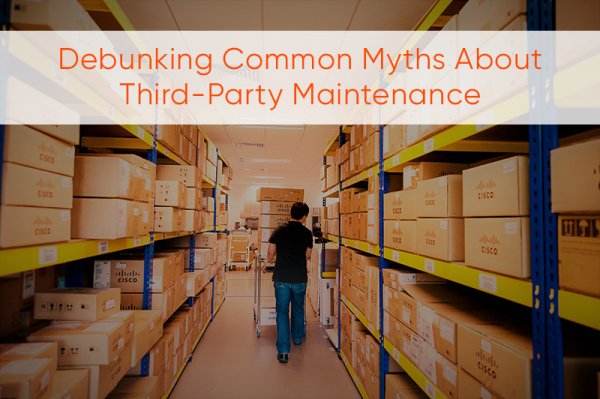With the increasing popularity of third-party maintenance (TPM), it is inevitable that myths will crop up. So we gathered some of the top TPM misconceptions to explain why they are just that: myths.
Myth #1: TPM providers don’t have access to software updates
One of the most frequently cited concerns about using TPM is the loss of access to important software updates. While a reasonable consideration, this blanket assertion disregards the nuances and complexity of software updates in general. For a start, the fear of missing out on feature updates is generally only pertinent for newly-released devices, as manufacturers are much likelier to release regular software updates for their latest generation of equipment than one that has been available for years.
Indeed, the number of updates published after the first three years of a newly launched device often dips precipitously. With server hardware, for instance, our experience shows that over 90 percent of updates happen within the first three years, when the hardware is still under warranty. Very few material software updates happen after that point, if at all.
Moreover, firmware updates have either ceased for the majority of the devices we encounter or are independent of any maintenance contracts, while the impact of unpatched devices means that security updates are typically released without charge. Of course, software updates from some brands may also be publicly available, making concerns over them a moot point.
Myth #2: TPM is inherently riskier
Another common mistake is the erroneous notion that TPM trades the support of the original manufacturer in return for cost savings, implying that a TPM strategy is inherently riskier. However, this presupposes a forced switch of the entire infrastructure stack to TPM and is a move we do not endorse in most cases.
The very first step in our TPM approach is a detailed assessment of the infrastructure using proprietary ClearView methodology. This serves to give organizations relevant insights on which aspects of their infrastructure are a good fit for TPM, delivering maximum cost savings while maintaining existing quality and standards.
Not all TPM is created equal, however, and the onus is on enterprises to work with a reputable partner with the requisite knowledge and experience to perform a proper assessment. In turn, enterprises benefit from relevant, up-to-date expertise to parse contractual fine print and correctly classify existing hardware.
Myth #3: Only manufacturers have access to skilled engineers
One lingering and sometimes unspoken fear is the perception that only the manufacturers can offer the proper support for their equipment. This is something we take seriously, and the central engineers at Curvature are highly experienced, with certifications and an average of more than a decade of direct experience with the products they support.
We use a similar yardstick for field service engineers – the local professionals sent on site to troubleshoot physical equipment as necessary. Conversely, it is worth noting that not all manufacturers maintain engineers in every region or country in which they operate, with many outsourcing their field service engineers to local partners.
With more than 30 years of experience providing enterprise-grade maintenance, the scale of our operations is correspondingly geared toward supporting enterprises globally. This means that we have the economies of scale and motivation to ensure that our engineers are updated with the latest knowledge and top certifications.
Myth #4: TPM providers don’t have quality parts
A legitimate concern with TPM providers is the availability of quality spare parts, particularly for legacy equipment or those approaching end-of-life (EOL). As the largest refurbished hardware supplier in the world, Curvature has the access and ability to source and test manufacturer parts to ensure consistent quality. This is the reason why many manufacturer channel partners source their spares through us.
Our global supply chain of genuine manufacturer parts, with warehouses located around the world, allows us to furnish spare equipment and support a wide range of manufacturer platforms. And while manufacturers may not be tailored to support their equipment beyond its EOL, a TPM provider such as Curvature has built a successful and sustainable business around supporting companies with legacy equipment.
In conclusion, TPM should be viewed not as an ‘all-or-nothing’ switch, but as more of a dial. Only by finding the right fit between manufacturer support and third-party maintenance can enterprises derive the maximum benefits from an optimized hybrid support model, resulting in significant cost savings and IT agility. And while the proportion of supported hardware will obviously change with time, an assessment should be made based on your technical and business requirements and hardware composition – just not on the sales cycle of the manufacturer.
Contact us today to arrange for a free ClearView assessment!



